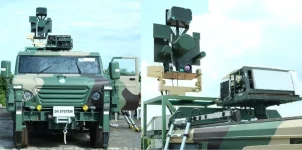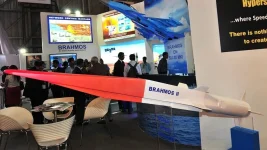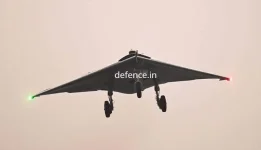- Views: 2K
- Replies: 16
A high-level delegation from India's Defence Research and Development Organisation (DRDO) has completed a detailed inspection of the Eurodrone platform at an Airbus facility near Munich.
The visit marks a significant step in evaluating advanced unmanned aerial systems to meet India's military requirements. Officials were reportedly impressed by the drone's substantial payload capacity and its ability to operate in challenging weather conditions.
The briefing comes as India’s armed forces—the Army, Navy, and Air Force—have a combined requirement for 97 Medium Altitude Long Endurance (MALE) drones.
As an official observer in the Eurodrone program, India is closely monitoring the drone's development to inform its own procurement and indigenous manufacturing strategies.
The visit, part of a Programme Working Group meeting in June 2025, allowed DRDO to gain firsthand knowledge of the aircraft's cutting-edge technologies.
A team of experts, led by specialists from DRDO's Aeronautical Development Establishment (ADE), received a comprehensive presentation on the Eurodrone’s technical and operational features.
Developed jointly by Germany, France, Italy, and Spain, the Eurodrone is engineered for high-level Intelligence, Surveillance, Target Acquisition, and Reconnaissance (ISTAR) missions.
Its twin-turboprop design, powered by General Electric Catalyst engines, enables it to carry a massive 2,300 kg payload, a capability that drew significant interest from the Indian delegation.
The drone's advanced systems are designed for versatility in modern warfare.
Key features highlighted during the visit included its state-of-the-art sensor suite, which accommodates Synthetic Aperture Radar (SAR), electro-optical/infrared (EO/IR) systems, and signals intelligence (SIGINT) payloads.
Furthermore, its capacity to carry precision-guided munitions, its secure data networks, and its suitability for operations in non-segregated airspace make it a formidable platform.
The ability to operate reliably in adverse weather is particularly relevant for India's surveillance needs in high-altitude areas like the Line of Actual Control (LAC) and for maritime reconnaissance in the Indo-Pacific.
India's formal entry into the Eurodrone program as an observer was finalised on January 21, 2025, following a request submitted in August 2024.
The move, managed by the Organisation for Joint Armament Cooperation (OCCAR), grants India and fellow observer Japan access to technical progress reports and operational data.
This insight is expected to be invaluable for India’s domestic drone projects, including the Tapas-BH-201 and the upcoming Archer-NG, by providing a benchmark for advanced design and system integration.
However, despite the promising technology, the Eurodrone program has faced its own set of challenges. Initiated in 2015, the project has experienced delays, with its first prototype flight now tentatively scheduled for mid-2027.
Rising development costs and the financial contributions required for observer status are additional factors that India will need to consider.
The country’s military drone market, valued at approximately $1.5 billion in 2024, is projected to expand significantly, making the decision on whether to procure foreign systems or focus on domestic production a critical one for India's future defence capabilities.




